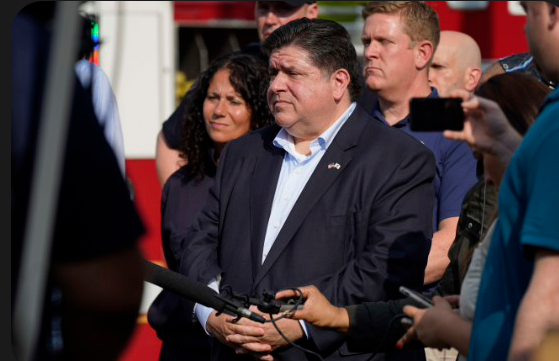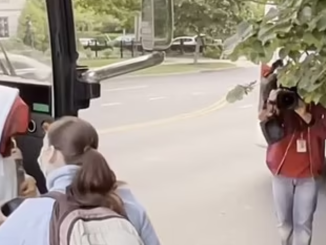
NEW YORK — Some of the biggest cities and states led by Democrats are expecting an influx of migrants as soon as the nation’s Title 42 border restrictions are lifted — and they’re worried they won’t be able to handle the surge.
Illinois Gov. JB Pritzker said the state is scrambling to find housing ahead of the bitter cold winter while Chicago received more than two dozen migrants on Tuesday. New York Mayor Eric Adams is predicting 1,000 migrants a week will arrive in the city and is already weighing reopening a controversial tent encampment to accommodate them.
“Our shelter system is full, and we are nearly out of money, staff, and space,” Adams said this week. “If corrective measures are not taken soon, we may very well be forced to cut or curtail programs New Yorkers rely on, and the pathway to house thousands more is uncertain.”
His administration is calling the migrant issue an “unprecedented emergency.”
Title 42, an immigration policy put into place during the pandemic, was scheduled to be lifted Wednesday, but Chief Justice John Roberts temporarily blocked the border rule at the urging of 19 Republican-led states, which appealed the plan to open up the nation’s borders again.
The stay by Roberts is temporary, and states are bracing for what’s next if — and when — Title 42 is eventually lifted. There’s added anxiety too over whether Republican governors will transport thousands of migrants to Democratic-led strongholds by bus or plane, as Texas Gov. Greg Abbott and Florida Gov. Ron DeSantis did this year.
Over the last month, thousands of migrants have crossed into the U.S. at the Texas border ahead of the expiration of Title 42, a Trump administration pandemic policy that allows the U.S. to expel migrants in order to stem the spread of the Covid-19 virus. Last weekend, the mayor of El Paso declared a state of emergency to help manage the rush of people while Abbott deployed hundreds of Texas national guard and state troopers along the border to block migrants from entering the U.S.
The current situation is reminiscent of the summer, when Abbott bussed thousands of migrants from Texas to cities like Washington, D.C. and NYC. At the time, those cities struggled to find housing and resources for migrants.
“Texas is using unprecedented strategies to respond to President Biden’s border crisis,” said Renae Eze, a spokesperson for Abbott. She did not say whether Abbott would bus migrants to other states.
DeSantis this week also didn’t say whether his administration would resume flights of migrants to Democratic cities or states. The governor in September infuriated Democrats and immigration advocates when he spent hundreds of thousands of dollars to fly about 50 mostly Venezuelan migrants from Texas to Martha’s Vineyard, a wealthy vacation spot in Massachusetts.
“The governor is committed to acting within his authority to counteract Biden’s border crisis and reducing the burden of the administration’s neglect of duty at the border on the people of Florida,” a spokesman for DeSantis said in a statement.
The migrant issue hasn’t gone unnoticed in Congress. Special funding in the federal spending bill released this week could take the pressure off of cities like New York, Chicago and Washington, as they try to handle the rise in immigrants and the challenges to provide shelter, food and other basic needs. Cities could apply for a piece of the $800 million that Congress has carved out to handle the flow of migrants if the spending is approved.
Adams, who earlier this week asked for $1 billion to help New York handle “the brunt of this crisis,” said he was “encouraged” by the federal funding, but said that should just be the start.
“With over 800 people arriving in the past four days alone, it’s clear that we still need a comprehensive strategy at our border and additional resources. We cannot be put in a position where we have to choose between services for New Yorkers and supporting arriving asylum seekers,” he said in a statement. Adams has also called for asylum seekers to be authorized to work before six months.
New York has seen thousands of asylum seekers bused from the Texas border over the past six months. Washington and Chicago, which also have seen a stream of migrants over the past six months, would also be able to apply for the federal funding.
Illinois saw 26 new migrants arrive Tuesday, bringing the number of asylum seekers to Chicago to 3,854 since Aug. 31. Officials with Chicago Mayor Lori Lightfoot did not respond to requests for comment.
Pritzker is concerned about the well-being of migrants as they arrive during a Midwestern winter when “housing becomes all the more crucial for every Illinoisan,” he said in a statement.
The governor said a solution is needed that “requires federal support and comprehensive immigration reform to repair a broken system.”
David Kihara contributed to this story.
* Article from: POLITICO


